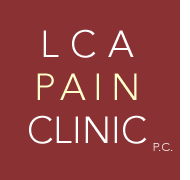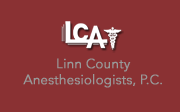Types of Treatments
There are a wide variety of treatment options available, depending upon the type and location of pain you are experiencing. LCA Pain Clinic physicians have special training to understand your pain and its sources, and will create a treatment plan to help address your particular situation. Every person is different, so every treatment plan is specially tailored to meet your specific needs.
The treatments we provide may include oral medications, physical therapy, injections or a combination of treatment types.
Please note that although LCA Pain Clinic physicians |
Injection Treatments
Epidural Steroid Injections - Certain steroid drugs (drugs related to cortisone) possess strong anti-inflammatory properties. When injected around the inflamed nerve, disc, joint or ligament, these drugs stop inflammation and relieve pain. To place this medicine as close as possible to the site of the inflammation, it is injected into the region of the spine called the epidural space.
Therapeutic Peripheral Nerve Injections - injections given near a specific nerve or group of nerves to relieve pain.
Intercostal Nerve Block - an injection in the area between two ribs. An intercostal nerve block is performed for pain due to herpes zoster (commonly known as shingles), an acute viral infection that causes inflammation of the nerves that spread outward from the spine. It may also be performed for pain caused from surgical incision in the chest area or to help determine the cause of your pain (diagnostic pain block).
Lumbar Sympathetic Ganglion Injections - used for complex regional pain syndrome in the legs.
Spinal Facet Joint Injections - performed if your doctor suspects that your neck or lower back pain may be caused in part by the small facet joints of the spine. Facet joints are located on the side of your spine, away form the spinal cord. Facet joint injections are performed for both therapeutic and diagnostic purposes and can be performed on the cervical, thoracic, lumbar and sacral regions of the spine.
Celiac Plexus Injections - performed for the treatment of upper abdominal pain, most often due to cancer or chronic pancreatitis.
Stellate Ganglion Block (Cervical Spine) - for certain pain syndrome affecting the upper extremities. May be performed to decrease pain and increase the circulation and blood supply to the affected limb. A stellate ganglion block may be performed for patients who have circulation problems or the following nerve injuries: Reflex Sympathetic Dystrophy, Causalgia, Herpes Zoster and Phantom Limb Pain.
Trigger Point Injections - injections of small amounts of local anesthetics and steroids in the area of the muscle where you have pain or tenderness. These areas are called trigger points because, when stimulated, they produce pain. Trigger Point Injections are performed if you have myofascial pain, which is pain in a specific muscle or muscle group.
Spinal Cord Stimulator Trials (Neuroaugmentation) - An electronic lead is temporarily placed below the skin along the spine. The lead is attached to a device that emits small amounts of electrical stimulation. The electrical impulses act to alleviate pain. If the temporary trial is successful at reducing pain, the patient will be referred to a neurosurgeon for placement of a permanent device.
Neurodestructive Procedures (radiofrequency ablation or chemical neurolysis) - destruction of a nerve to alleviate pain. These procedures are most commonly performed on paravertebral facet joint nerves (cervical, thoracic, lumbar or sacral).
Ganglion of Walther Injection (sacrococcygeal injection) - an injection for tailbone pain.
Discography - used to diagnose disc related pain.
Selective Nerve Root Injections - used to localize pain from a specific nerve in the spine.
Intradiscal Electrothermal Therapy - used to treat injured discs.
Sacroiliac Joint Injections - steroid injections for sacroiliac pain.
Bursa or Joint Injections - injections used for certain kinds of bursitis and some types of arthritis
NOTE: This is not an all-inclusive list of the treatments we provide, but is a list of some of the most commonly used treatments. Other therapies are available to patients as appropriate.


 Home
Home - Optimize pain control.
- Optimize pain control.